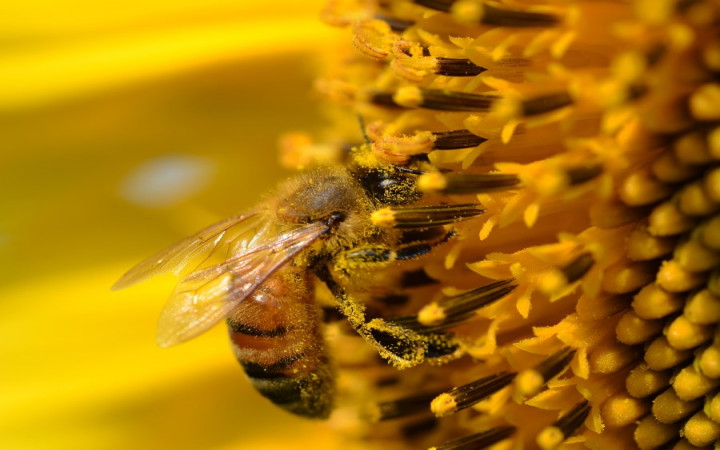Today’s Wonder of the Day was inspired by Nicole from Vaucluse. Nicole Wonders, “How bees make honey” Thanks for WONDERing with us, Nicole!
What did the husband bee say to his wife when he got home?
"Hi Honey!"
Isn't that the best bee joke you've ever heard? What? It isn't? We don't bee-lieve it!
Bee jokes have created quite a buzz around Wonderopolis these days. Of course, that's probably bee-cause bees are such important creatures, and we simply love the honey they make. In fact, some of our Wonder Friends were recently WONDERing exactly how it is that bees make that delicious substance.
Most of us have never dared to peer inside a beehive. Is a typical hive filled with tiny stoves, cooking pots, and stirring spoons? Not quite! The real process of making honey is much more personal than that!
The process begins when bees go hunting. Older worker bees fly outside the hive searching for flowers filled with nectar. Depending upon the weather and the time of year, they may have to fly several miles to find the flowers they need.
When bees spy flowers, they swoop in and use their long, straw-like tongues to suck out the flower's nectar, which is very similar to sugar water. They don't digest it, though. The nectar gets stored in their extra stomach (called a "crop") for the flight home. Bees may visit hundreds of flowers to fill their crops with nectar.
During the return flight, the nectar mixes with enzymes in the crop. The enzymes slowly begin to change the chemical composition of the nectar to begin the process of turning it into honey. The complex sugar (sucrose) in the nectar is broken down into simple sugars (glucose and fructose) during this process, which is known as inversion.
Back at the hive, the bees regurgitate (that's the scientific word for "throw up") the nectar into younger worker bees' mouths, where it continues to be broken down even further. The regurgitation process repeats until the nectar has been broken down completely, at which point it is regurgitated into a honeycomb cell.
The deposited nectar does not yet resemble honey, because it's too watery (about 80% water). Hive bees quickly begin fanning the fresh nectar with their wings to speed along the natural process of evaporation. Once the nectar's water content drops to around 14-18%, it will resemble the thick, golden substance we know as honey.
When the bees are satisfied with the honey, they seal the honeycomb cells with a liquid secretion from their abdomens. This secretion hardens into beeswax, which helps to keep air and water away from the honey. Stored this way, the honey will keep indefinitely. This makes it the perfect food source to keep bees happy and healthy throughout the long, cold winter.
If you've ever seen an active beehive, you know it can be filled with hundreds and even thousands of bees. That's a good thing, because a single worker bee can only produce about one-twelfth of a teaspoon of honey over the course of its life. Working together, though, thousands of bees can produce hundreds of pounds of honey in a typical year.





